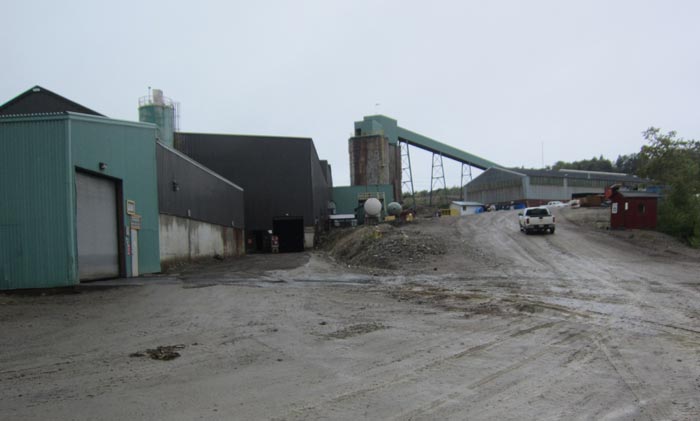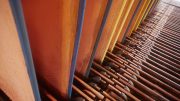Extremely challenging market conditions will persist for some time, but the resource sector can look forward to supply-side tightness in the medium-term, along with better metal prices, Pat Mohr, a vice-president and economics and commodity specialist at Scotiabank, told a conference in Toronto hosted by PwC in partnership with The Northern Miner.
“Supply side tightness is what is going to bring up commodity prices later in the decade — I don’t think it will be a rejuvenation of global growth — though it could be that China does better than some people imagine,” she declared at the “Shaping the mine of the future” conference on Nov. 25. “It’s going to be all on the supply side … nobody is going to invest in a new zinc mine at 70¢ zinc … [but] they’re actually needed now, around the world, for late-decade supplies, so what’s going to happen is the market is going to tighten.”
Mohr forecasts zinc — which is her favourite metal — will rise to US$1.25 per lb. by 2017, and to support that estimate, points to news in November that 16 Chinese smelters will cut production by 20%, Glencore’s (LSE: GLEN) decision a month ago to trim its mine supply and the closures of the Century and Lisheen zinc mines. Century, the world’s third largest zinc mine, closed in the previous quarter due to mine depletion, and Lisheen recently shut down in November. (Glencore said it would cut 100,000 tonnes of production at profitable mines this year, and another 500,000 tonnes next year.)
“Zinc has had a bit of a drubbing in the last several months because of the questioning as to whether or not China is going to remain a key growth market, but the actual supplies — both for refined metal and in concentrates — are moving into deficit, and in fact they may be in deficit right at the moment,” she said. “By the second half of next year, the concentrate market is going to visibly tighten, and you’ll see lower visible inventories, and rising premia, and that will be what moves the price back.”
Copper — which at the top of the cycle, in February 2011, was US$4.60 per lb. — has been on a downward slope for some time, she says, mostly due to mine supply coming on-stream in places like the Democratic Republic of the Congo, Zambia, Indonesia and the U.S. Mohr expects prices will stay on a lower plane for the next several years at US$2.10 per lb., although she adds, “that might be a bit too optimistic,” given that the LME price at the time of her presentation was just US$2.05 per lb. Nevertheless, she says, by late decade, the price is going to move back up to US$3 per lb., when supply and demand conditions tighten for the metal.
As for iron ore, the metal has lost 70% of its value since early 2013. The reference price (spot price in Tianjin in northern China) is US$45 per tonne. The economist believes iron ore prices “will stay weak for the next eighteen months,” before improving “slowly” in the late decade.
Nickel is also weak, trading in recent days at a mere US$3.70 per lb., which she says is “about mine cash costs in Canada,” and “below break even, including depreciation, around the world, including in Canada.”
She forecasts nickel will stay in the US$5 per lb. range for several years, rising to US$7 per lb. by 2017.
If she had to pick one factor for the depressed nickel price, she says, it would be that there has been weak global business investment this year, which impacts stainless steel demand (60% of nickel goes into stainless steel production).
She also blames lower nickel prices on the downturn in the oil sector.
“It’s nice to have a US$20 decline in oil for consumers, but it’s not nice for anyone, except consumers, to have the extent of the decline that we’ve had. It’s destabilizing and business investment is extremely weak, and that has hurt nickel.”
In terms of the oil outlook, Mohr admits that she has moved into the lower-for-longer camp, and sees West Texas Intermediate crude stuck at US$45 to $50 next year, moving to US$55 near the end of 2016.
“We are waiting for a supply side adjustment to low oil prices, and we really haven’t seen that around the world,” she says.
“U.S. oil production peaked around April this year, and it’s declining, but there are a lot of estimates as to what it actually is. However, I do think we are going to see a fall in U.S. production, probably [in first-half 2016], and it’s going to help address oversupply, and bring prices up.”
Turning to China, Mohr jokes that as an economist she looks at 20 economic indicators, but that for her audience, the only one they should really follow is China’s Purchasing Manager Index for Manufacturing.
She explains that whenever those numbers are released, there is a reaction on the London Metal Exchange, as well as in the iron ore and oil markets, and even in gold.
In the last few months, China’s PMI has slipped a bit below 50, which Mohr says could indicate that manufacturing activity is not expanding, and is probably contracting. “We have all noticed that China has overbuilt many manufacturing industries in the past decade, and we are seeing the impact.”
But she hastens to add that things looked better in September and October.
She noted that while the stock market correction of a few months ago (resulting in a 43% drop from peak to trough) took a toll for two months on motor vehicle sales in China, sales were up again in September and October, and purchases of sport utility vehicles, or SUVs, as of October, were up 50% year-on-year.
“Chinese don’t want little sedans, they want SUVs, just like you have,” she says. “And this will be base metal intensive.” Indeed, motor vehicle sales will support raw materials going forward, she argues.
Vehicle ownership per 1,000 people in China last year (the latest year for which statistics are available), was just 104, compared with 803 in the U.S., 651 in Canada and 30 in India. “As motor vehicle sales and ownership builds out in China, this is going to be a great boon for base metal demand, and it is of course part of consumer spending, not business investment,” she says.
Mohr is also optimistic about China’s demand for base metals, as Beijing builds infrastructure as part of its “One belt, one road” policy.
President Xi Jinping announced the program during a visit to Kazakhstan in 2013, and envisions developing an economic belt along the ancient Silk maritime and land routes linking China with the five Central Asian states of Kazakhstan, Kyrgyzstan, Tajikistan, Turkmenistan and Uzbekistan, as well as Russia and Europe, and countries in South Asia such as Myanmar, India and Pakistan.
The land route encompasses Xi’an, Urumqi, Almaty, Bishkek, Tehran, Istanbul, Moscow, Rotterdam and Venice, while the sea route moves from Zhanjiang on China’s coast down to Jakarta and Kuala Lumpur, through the straits of Malacca, to Calcutta, Colombo, over to Nairobi and up to Athens and Greece.
“All the government people in China are talking about the new Sil
k Road initiative, which is a signature economic and foreign policy initiative coming from President Xi Jinping,” Mohr says, who attended the recent China Mining conference in Tianjin. “There are 39 railroads being built between China and these countries. Just think about that for a minute: 39. So there is going to be a lot of metal used with that construction. It will be interesting to see how that all develops over time.”






Be the first to comment on "Scotiabank’s Pat Mohr on metal prices, China demand"